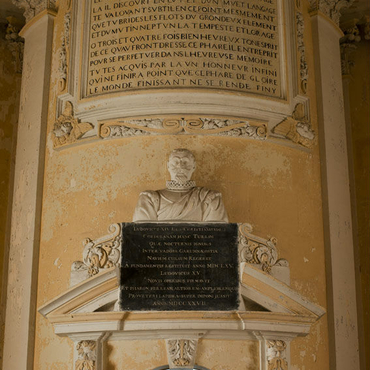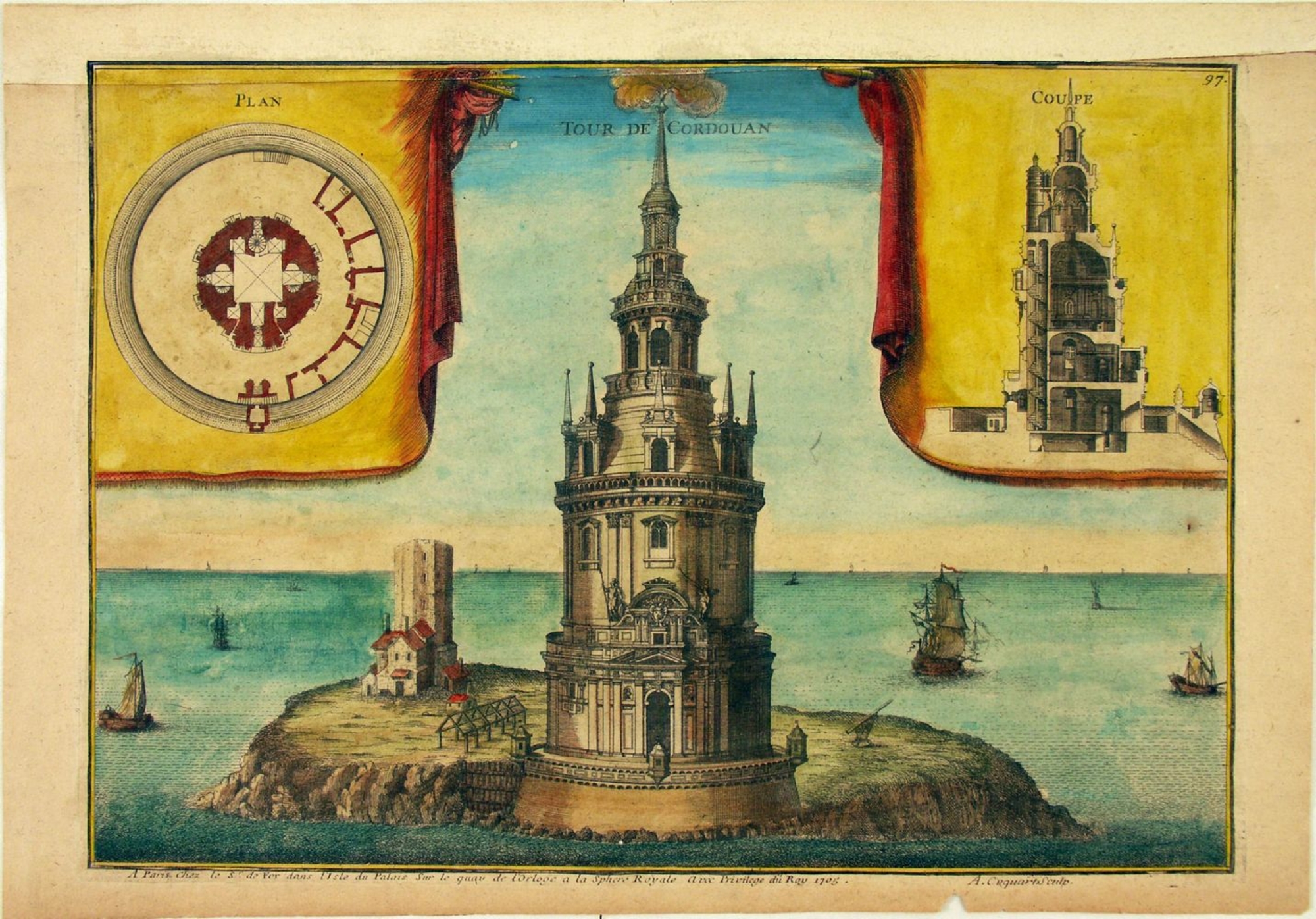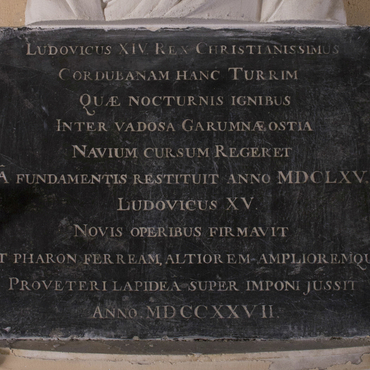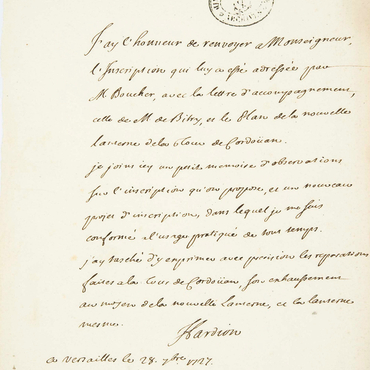
- Home
- A Renaissance monument
- A royal tower
- The inscriptions in the chapel
The bust of Louis de Foix has been placed over the entrance to the lighthouse's chapel, across from the altar. Above it, an inscription praises the architect's qualities: « Quand j’admire ravi cette œuvre en mon courage, Moi de Foix, mon esprit est en étonnement. Porte dans les pensées de ton entendement Le gentil ingénieux de ce superbe ouvrage. Là il discourt et luit et d’un muet langage, Te va louant subtil en ce point mêmement. Que tu brides les flots du grondeux élément, Et du mutin Neptun la tempête et l’orage. O trois et quatre fois bien heureux ton esprit De ce qu’au front dressé ce phare il entreprit Pour se perpétuer dans l’heureuse mémoire. Tu t’es acquis par là un honneur infini, Qui ne finira point que ce phare de gloire, Le monde finissant, ne se rende fini. » [When, astonished, I admire this work, , My dear de Foix, I rest fully amazed, , To think upon your understanding The noble wisdom of this splendid edifice, , Which speaks as if in a silent tongue, , By which you, too, will be subtly praised That you have stemmed the roaring tides, , And Neptune’s rebellious tempests and storms, , Your spirit’s gladness by this multiplied, , That from you this lighthouse did once arise And thus endure in our happy recollection. , In this you have achieved eternal honour, , This lighthouse, which will never cease Until too this world greets its final hour.] Inscriptions such as these, which praise the qualities of an architect within the confines of a structure created by him or her, are to be found nowhere else – except for the lighthouse at Alexandria, where Ptolemy allowed the architect to inscribe his name within the structure. Louis de Foix thus proclaimed himself to be the creator of a new lighthouse of Alexandria.



